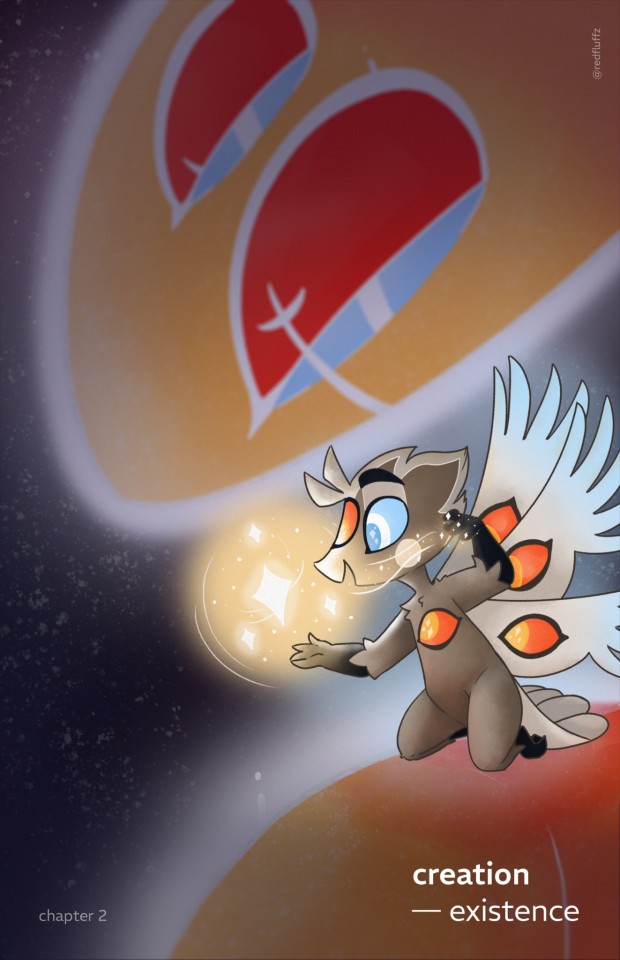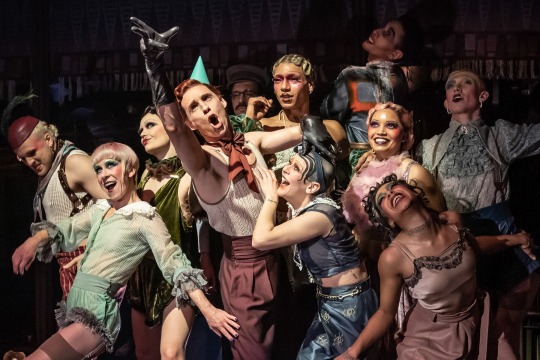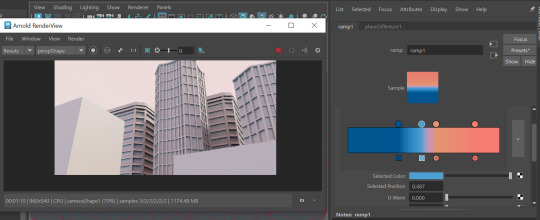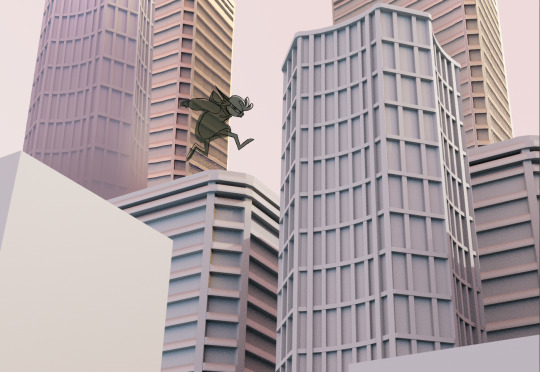#pauson
Explore tagged Tumblr posts
Text
Páusōn

Or as I write it, Páuson. Also known as Páhuson (with a hard h like the h in loch) or Péh₂usōn. His name means "Protector".
Páuson is the god of shepherds, nature, doorways, roads, paths, traveling, animals, forests and hunting; He also acts as a psychopomp.
He is the god of the liminal, the in-between. He guards travelers, merchants, and other go-betweens. He guards herds, sources of wealth, as well. He may thus be prayed to both as an opener of the ways and as a giver of prosperity.
He is characterized as a liminal deity himself, being in a way an in-between between man and animal in the depictions of his descendants. The figure of the horned god corresponds well to how he would be depicted.
Finally, he seems to have had a connection to fertility and sexuality, especially granting sexual prowess
He also had the names K̑ṝnónos and Pṇtóspotis according to this source
Offerings
taken from here
Coins or pieces of valuable metals
Depictions or imagery related to goats
Goat's milk
silver and gold beads
Sheperd's crook
Depictions or imagery related to crossroads
goat horns, fur or leather (ethically sourced)
symbols of abundance
lantern (related to his dominion over travel and his role as psychopomp)
Devotional acts
Travel to new places
Go on hiking in nature
Take care of the forest
Pick up trash you see on the road
Take care of your financial security
Learn about nature preservation programs in your area
Associations
Goats
Forests
Shepherds
Roads
Travels
the Wild in nature
Money
Commerce
Yew
Wednesday
April
Descendants in later pantheons
Pan (Greek)
Hermes (Greek)
Faunus (Roman)
Mercury (Greek)
Pushan (Vedic)
Cernunnos (Celtic)
Finally, here's his wikipedia article
#proto indo european#proto indo eauropean religion#proto indo european paganism#proto indo european religion#proto indo european pantheon#pie religion#pie pantheon#pie paganism#pie polytheism#pie reconstructionism#deity devotion#deity worship#pagan#paganism#deity#polytheism#pantheon#polytheist#pauson#pauson deity#neopaganism#pagan reconstructionism#reconstructionist paganism#pagan revivalism
28 notes
·
View notes
Text

So today i watched some videos from
and guys it helped so much creating this cover :D
I'm really happy of the result. :) Now i need to color all the pages. Haha ...
#See ya in hell when i'm done#cause when i'm done#i'm probably dead#but worth it#hazbin hotel#hazbin hotel heaven#hazbin hotel lucifer#hazbin hotel god#hazbin hotel fanfiction#hazbin hotel headcanon#creation existence
28 notes
·
View notes
Text



Photos of Frank Lloyd Wright's Pauson House taken by Pedro E. Guerrero in 1941
36 notes
·
View notes
Note
Whats wrong with the Arthuriana fandom? You mean to tell me that the round table was not an allegory for the objective fact that the Knights were not just in a polycule, but that they were fighting for no real reason at all? A cup maybe? And that they were 100% pagan? ..did I mention that they were also an oddly diverse bunch :D
"Since the objects of imitation are men in action, and these men must be either of a higher or a lower type (for moral character mainly answers to these divisions, goodness and badness being the distinguishing marks of moral differences), it follows that we must represent men either as better than in real life, or as worse, or as they are. It is the same in painting Polygnotus depicted men as nobler than they are, Pauson as less noble, Dionysius drew them true to life." - Aristotle, Poetics part II
As Aristotle points out, in poetry men are depicted one of three ways; as better than real life, worse than real life, or simply as they are. The Arthurian legends ought to fall into the first category.
Plato, Aristotle's teacher, suggests that in an ideal society poets should be expelled entirely for harming the truth with their flowery verses and unbridled romanticism. I don't fully agree with Plato and his outright dismissal of poetry, but I think he was onto something, at least in terms of social morality and the hazard of not upholding our legendary figures to high standards.
It is in the nature of most modern writers (I'm guilty of this as well) to drag heroism and nobility down from a pedestal into the dirt of "realism". This is most apparent (in my opinion) in stories like the Arthurian myths. The problem is that the Arthurian myths aren't meant to be realistic. Arthur and his knights aren't meant to be just like ordinary men. We can argue about the misty and ancient origins of the stories and characters from pagan Celtic mythology or Roman influence in Briton, but the fact remains, the Arthurian myths are ingrained as a part of the soul and cultural identity of Christian Western Civilization. They're meant to be held to a high standard. Arthur and his knights, while not immune to flaws, are meant to be paragons of virtue, honour and chivalry. They are meant to inspire us and direct us to something better than crude realism. My problem with the "Arthuriana fandom" is that most of them fundamentally misunderstand or outright resent this viewpoint. And this isn't just a recent phenomenon, many others over the last few centuries, under the encroachment of the Enlightenment and Modernism, such as Sir Walter Scott, Samuel Clemens and Marion Zimmer Bradley have also been guilty of this. Even true medieval writers like Chretien de Troyes at times have fallen into the habit of lowering our legendary figures to simply ordinary men in extraordinary circumstances. Not a bad thing from the perspective of entertainment, but I for one adamantly believe that the Arthurian legends should never be lowered to merely base entertainment and the engagement of one's passions. They must be held to higher standards of virtue and stoicism, and used as examples of morality to inspire and uplift an ideal human society.
TDLDR: I think the Arthurian legends should be held to the highest standards of virtue and morality, but most of the modern interpretations of the myths and subsequent "fandoms" have completely bastardized the source materials to the point that I would rather see them die out entirely than continue as they are.
#feel free to disagree if you want#but I'm not going to argue about this#I am steadfast in my opinions on this topic#even though I concede they are fringe beliefs in modern culture#that doesn't make me wrong though
4 notes
·
View notes
Note
What/who are some inspirations for your art style ?
I absolutely love styles like yours !! But aren't sure how to start studying it without accidentally outright copying the way someone else draws.
Hello! Thank you for the question :)
I definitely developed my style growing up by looking at classic Disney artists such as Milt Khal, and was very inspired by both Jin Kim and Cory Loftis who are both animation artists working today. Go check them out!
These days I don't think about style at all and just draw the way I like to draw-- though some of my most recent obsessions/inspirations are @galoogamelady here on Tumblr and My2k on Instagram/Bluesky. I love how they both capture specificity in character and acting and have incredible draftsmanship. They actually make me insane and anytime I see their art I start foaming at the mouth like a rabid dog
Studying styles that excite you and make you feel inspired is honestly one of the best ways to grow your skills! What you do in your sketchbook is for you, and there's nothing wrong with study as long as you aren't claiming an exact copy of someone else's work is yours. I do personal studies of artists I like every so often and I always learn a lot whenever I do. Keep it fun for yourself, and you'll keep drawing!!
I would also say that while "Style" FEELS super important if you are early on in your art journey, great drawing comes from a solid understanding of fundamentals. The more you understand what you like about the work of others and do your best to study and apply it in your own, the more growth you'll see that is specific to YOU and your own personal style and taste.
BaM Animation on Youtube is a great place to learn some fundementals about basic western-feeling animation/comic style art in a fun and digestible. I can think of more resources to look at if you like, feel free to DM me or ask again.
Best of luck!
8 notes
·
View notes
Text

News of Cabaret: It's official Cabaret goes to Broadway! We still have to wait to know if Eddie will reprise his role there.
"Award-Winning ‘Cabaret’ Revival Plans Spring Broadway Bow"
The production opened in London with Eddie Redmayne in a starring role; the New York cast has not yet been announced but he is expected to join it.
By Michael Pauson, New York Times, July 11, 2023
Willkommen, bienvenue, Broadway!
“Cabaret,” the ever-popular (and portentous) musical set in a Berlin nightclub on the eve of the Nazis’ rise to power, will return to Broadway in the spring in a new production that has already won raves in London.
The producing team on Tuesday morning announced a plan to transfer the show to Broadway, and said it would open at the August Wilson Theater, where a revival of “Funny Girl” is scheduled to close Sept. 3.
The “Cabaret” producers did not announce any other details, but it is widely expected that Eddie Redmayne, the film star who played the nightclub’s Master of Ceremonies when this revival opened in London, will reprise the role on Broadway. The show’s other big role, Sally Bowles, the nightclub’s star singer, was initially played in London by Jessie Buckley; that role has not yet been cast in New York.
“Cabaret,” with music by John Kander, lyrics by Fred Ebb, and a book by Joe Masteroff, originally opened on Broadway in 1966, and that production, directed by Hal Prince and starring Joel Grey, won eight Tony Awards, including for best musical, and ran for three years. Grey went on to star in a 1972 film adaptation that won eight Academy Awards, including one for Grey and one for his co-star, Liza Minnelli.
The musical was revived on Broadway in 1987, again with Prince directing and Grey as the Emcee. Then in 1998, a new production directed by Sam Mendes and starring Alan Cumming and Natasha Richardson, came to Broadway; that production closed in 2004 and then returned in 2014 for another year, opening with Michelle Williams opposite Cumming.
This latest revival, directed by Rebecca Frecknall, opened in London in 2021, and won seven Olivier Awards, including one for best musical revival. Its run is continuing. The critic Matt Wolf, writing in The New York Times, called the production “nerve-shredding,” and said, “Frecknall pulls us into a hedonistic milieu, only to send us out nearly three hours later reminded of life’s horrors.”
The lead producers are Ambassador Theater Group, a British company that owns and operates theaters around Europe and the United States and has become increasingly active in producing on Broadway, and Underbelly, a British company closely associated with the Edinburgh Festival Fringe.
“Cabaret” will join multiple shows on Broadway this season that deal with antisemitism, among them “Just for Us,” a one-man show from the comedian Alex Edelman, which is now running, as well as “Harmony,” a musical by Barry Manilow and Bruce Sussman that is opening in the fall and “Prayer for the French Republic,” a play by Joshua Harmon, which is to open in the winter. Last season’s Tony-winning best play, “Leopoldstadt,” which closed earlier this month, and the winner of the Tony for best musical revival, “Parade,” which runs until Aug. 6, are also about antisemitism.
#eddie redmayne#eddieredmayne#redmayne#cabaret 2021#broadway#new york#july 2023#cabaret at the kit kat club
19 notes
·
View notes
Text
youtube
How Shows Like Rick and Morty Are Animated (ft. BaM Animation) by Zaid A
A video essay on how Rick and Morty is animated. Featuring Maximus Pauson, a character designer and artist for Rick and Morty.
0 notes
Text
Concept Art:
Development Project 2: Light and Shadow
At this point in time, I am now at the stage where I focus on the environment design of Light and Shadow, as well as how to integrate both my character and the 3D city world together.
youtube
Yone Santana posted a video exploring the different ways of lighting up an environment to create an 'exterior' lighting through Maya's Arnold feature, which allows users a whole variety of different controls of lighting their stage up; I could manipulate the exposure of my light, the intensity as well as the choice of, and amount of, colours I want in my lights. This feature was available to me through adding a sky dome or physical skylight.

In regards to the main purpose of the project's 'light and shadow' theme, I also added in a strong directional light to mimick a 'daylight' hour in my setting, then rotated it to make it appear as the foreground is exposed to the intense lighting compared to the background buildings, which are instead hit by the 'sunlight' from behind.

This distinction of shading between the foreground and background was me applying what I learnt from BaM animation's video of significance in values of environment, which visual development artists Allison Perry discussed how certain shades of value can set up a stage for the main focal point of the environment - in this case being the two basic cubes in front of the camera.

Yone Santana also showed how users can create further advanced sky dome light through its gradient feature, were one can choose and control what colours can represent the shade in an environment as well as the light. I had a colour palette in mind to compliment the relationship of the city foregrounds and backgrounds, as well as what I envisioned my cityscape character to resemble; the chosen colours were orange and blue.

Maximus Pauson of BaM Animation explains how colours can indicate the mood of a scene; certain colours signify warnings to viewers, such as red and orange evoking a sense of danger. Darker colours like blue can appear mysterious, but depending on the saturation, the shade can be unwelcoming, thus making an environment appear "harsh and unforgiving". Generally, most environments use a palette of specific colours that would 'harmonise' with each other, such as triadic, analogous and complementary colours - orange and blue are such examples of complementary colours.




Granted, it is a subtle palette of oranges and blues within this Arnold lighting, though I would have decided to saturate these colours in a 2D software during its editing anyways. Prior to the past blogpost, I also implemented dynamic silhouette over my 3D piece to plan out how Kenz would be travelling on the foregrounds of this composition.

To compliment and symbolise the environment's colours of orange and blue hues, I also applied them to Kenz's colour scheme, which seems to suit him a lot and make him feel more belonging in this place, despite the obvious difference of 2D and 3D fields.

The lighter, orange tones could create a fast-paced, dangerous environment for my cityscape, whereas the blues of greyish tones can further indicate how urban life can seem uninhabitable. However, my character is able to adapt in the city, as I imagine him as a quick and wary individual. This is why I have decided to choose these two colours for both my environment and character design.
In my next and final blogpost, I will find a way to properly mix these two fields together and present a strong piece that overall offers a unique approach of style in visual development.
Sources:
BaM Animation (2023) Painting Backgrounds for TV Animation! Photoshop. 14 June 2023. Available at: https://www.youtube.com/watch?v=MKtcsF5IUF0 (Accessed: 17 January 2024).
yone santana (2016) Maya 2017 - Exterior Lighting in Arnold. 30 November 2016. Available at: https://www.youtube.com/watch?v=K3QNbkyEe4I (Accessed: 17 January 2024).
0 notes
Link
Successful development of Pauson–Khand reaction with atropisomeric substrates could result in new practical applications – The Lifestyle Insider
0 notes
Note
Hello,
I wanted to say I love your blog and was curious if you had any information on Curnunos or the Green Man. I'm looking to make an altar for him and want to venerate the oldest mythological representation of him.
~🕊
Hello! sorry if I got to you a bit late
I think the best answer here is to look at the horned god Páuson of the PIE pantheon!
#deity devotion#deity worship#pagan#paganism#proto indo eauropean religion#proto indo european pantheon#proto indo european religion#proto indo european#proto indo european gods#proto indo european polytheism#proto indo european paganism#deity#pantheon#pauson#pauson deity
1 note
·
View note
Text
Materia Medica
Blood Root
Botanical Name: Sanguinaria canadensis
Common Name: Bloodroot, Red Root, Puccoon, Paucon, Pauson, Red Puccoon, Coonroot and Indian paint ((( all refer to Native American uses of the plant to color skin, clothes, and baskets ))) tetterwort ((( old english for skin disease ))) , sleep slumber, and snakebite ((( all of which were used mostly by Old English speakers ))).
Family: Papaveraceae or Poppy family
Parts Used: Rhizome, Root,
Energetics and Taste: Harsh, Bitter, Acrid. Drying and cooling in small amounts, warming and stimulating in larger amounts.
Actions and Properties: Bloodroot is currently used to cause expectoration and to clear the respiratory pathways of mucus. The herb can be taken internally to treat a variety of ailments such as asthma, emphysema, laryngitis, bronchitis, pharyngitis, sore throats, and croup. Cough lozenges are made by mixing fresh sap from roots with maple syrup or sugar. A homeopathic remedy containing bloodroot has also been used to treat migraines. Fresh bloodroot sap or an infusion of the root can be applied externally to treat warts, benign skin tumors, ulcers, eczema, chilblains, or ringworm. The dried powder can be sniffed to treat nasal polyps. Sanguinarine, the medicinally valuable alkaloid found in bloodroot sap, is purported to have antibacterial and anti-inflammatory properties that inhibit the formation of plaque and reduce gingival inflammation and bleeding. Research has shown that the alkaloid is retained in the mouth for long periods after brushing, providing longer resistance to plaque and gingival inflammation.
Constituents: Bloodroot exudes a bright orange-red sap from all parts when cut, with the highest concentrations found in the rhizome where the juices are stored. The sap contains isoquinoline alkaloids, red resin, and an abundance of starch. Sanguinarine is the predominant alkaloid, making up 50 percent of the total alkaloid content. The alkaloids in the sap contribute to the medicinal properties of the herb, though they can also be poisonous in large doses, causing nausea, vomiting, dizziness or fainting, dilated pupils, and heart failure. The alkaloids in bloodroot have strong antibiotic and anti-inflammatory properties. The herb has also been described as having antiseptic, cathartic, diuretic, emetic, emmenagogue, escharotic, expectorant, febrifuge, sedative, spasmolytic, stimulant, and tonic properties.
Description: Plants reach a height of 6 to 12 inches at maturity, though they are typically only half that height at the time of bloom. Each plant consists of a single leaf wrapped tightly around a flower bud; the leaf opens to expose the flower as it blooms. Bloodroot leaves are kidney shaped, with five to nine rounded lobes arranged palmately and covered with a whitish-gray down. The pale underside of the leaf is prominently veined. Once the flowers have faded, the basal leaves persist until August, when they turn a deeper green and reach their maximum size of 6 to 10 inches. Each waxy, white flower grows on a single stem up to 8 inches in height, blooming around late March and early April. Flowers are roughly 2 inches in diameter, with gold-colored stamens in the center. Whereas other members of the Papaveraceae family have flowers with 4 petals, bloodroot flowers have 8 to 10 petals arranged in 2 to 4 rows.
Habitat: Bloodroot is mostly found in rich woodlands or on sunny-to shady edges of wooded areas, on slopes, or on bottomlands along shaded streams. Bloodroot prefers light-to-medium well-drained soils with a sandy-to-loamy texture. Bloodroot can tolerate a range of pH, but does best in soils with a pH of 5 to 7 or higher. Soils with a layer of leaf cover in cool areas under deciduous trees are optimal. Bloodroot is an indicator species for birch-maple-basswood and hardwood forests.
Harvesting/ Propagation: Bloodroot can be propagated by seed, root division, or leaf cuttings. Seeds can be sown in outdoor beds in the spring or summer, or in a cold frame in winter. A cold stratification period is required for the seed to produce a root, then another warm and cold period to produce a shoot. Rhizomes can be divided by breaking them into small pieces, each of which should contain one bud. This is typically done in late summer or early fall after the leaves die back. Leaf cuttings can be taken from shoots in late spring and set in a protected cold frame until the plants are established.
Preparation and Dosage: Roots are harvested in order to then make them into a powder or to make a dried root tincture. In small doses, bloodroot is relaxing and soothing, particularly on the bronchial muscles. In moderate doses, the herb has stimulating and emetic properties.
Contradictions/ Cautions: Large doses can cause irritation of the mucus membranes. Other negative side effects can either be a burning or stinging sensation in the mouth, or a sloughing of the epithelium cells when used orally. The alkaloids in the sap can be poisonous in large doses, causing nausea, vomiting, dizziness or fainting, dilated pupils, and heart failure. Should not used during Pregnancy. Regarded as abortifacient. Seeds are narcotic, with effects said to be similar to Datura seed ((( can cause death if taken internally ))). People should not use this herb unless under the guidance of a trained health care practitioner. The fresh root is more dangerous than the dry root. Do not use more than 1-2 drops every 2-4 hours in acute phase, then 1-2 drops per day after the acute phase. Long term use may be contraindicated. Long term users of products with sanguinarine in them have increased incidence of leukoplakia.
Ethnobotanical Considerations: Bloodroot is listed as “At-Risk” by the United Plant Savers organization. Often collected from the wild and marketed domestically and internationally, the plants on the “At-Risk” list have experienced pressure due to over-collection or habitat loss. This pressure, combined with the innate sensitivity and rarity of the plants listed, has led to the rapid decline of wild populations in their native ranges.
History/ Folklore/ Mythology: Native Americans used bloodroot as a dye, love charm, and potent medicine. European colonists learned of the Native American medicinal uses for the herb and adopted them to suit their own needs and as early as the 1800s Bloodroot was described in pharmacopoeias. In the mid-19th century at the London Middlesex Hospital, Dr. J. Weldon Fell experimented with the use of bloodroot to treat skin cancers. Although used extensively at that time, the treatment eventually fell out of use until its revival in the 1960s for minor skin tumors, particularly those in the nose and ears. As of the year 2000 researchers were studying the ability of bloodroot alkaloids to selectively fight cancer cells without harming normal cells. Although it has experimentally shown anti-proliferative potential towards human carcinoma cells, current in vitro studies are not conclusive and more research is needed before bloodroot is considered for development as a commercial anticancer drug. Sanguinarine has been used in toothpaste and oral rinses. Bloodroot can be used as a botanical dewormer for cattle and sheep.
References:
0 notes
Text
Look up many youtube videos and tutorials on google there is so much helpfull stuff out there
So for anatomy I reccommand to go there
For coloring I reccomand to search specifically the medium your working with how to draw/color with highlighters panda ink digital art
And look several vids up cause each person gas their own style that can inspier you
Another advice is the top video isnt always the best or what you are looking for so scroll down a bit too
Also here are some youtubers and youtube videos I reccomand:
youtube
youtube
youtube
youtube
youtube
youtube

Hiii to any artists seeing this have any tips for anatomy or coloring or art in general I am trying to improve I'll take any I can get.💔
6 notes
·
View notes
Photo










646. Frank Lloyd Wright /// Rose Pauson House (Shiprock) /// Phoenix, Arizona, USA /// 1939-42
OfHouses guest curated by WAI Think Tank. (Photos: © Pedro E. Guerrero. Source: Pedro E. Guerrero Archive; Library of Congress, Washington.)
#WAI#frank lloyd wright#Rose Pauson#USA#40s#OfHouses#oldforgottenhouses#www.ofhouses.com#the collection of houses
732 notes
·
View notes
Photo

My design and turnaround of Pickle Rick. Color By Corey Booth...its been a really weird experience for me to see a drawing I did become meme’d to oblivion. It was hard to design tho...So I’m proud
#Pickle Rick#rick and morty#maximus julius pauson#Character Design#justin roiland#dan harmon#turnaround#model sheet
600 notes
·
View notes
Photo


Upcomig gifts! It looks like challenge “AHS is ts4″ :D Cody Fern and Sarah Paulson
Hope that you will like them!
Кстати, для моих русскоговорящих подписчиков, у меня есть паблик в ВК. Заглядывайте, может, заинтересует
#ts4#s4#ahs#ahs apocalypse#sarah paulson#cody fern#michael langdon#simerleen#american horror story#michael langdon sim#cody fern sim#sim celebrity#sarah pauson sim#my sims#my simmies#sim edit#sim edits#the sims 4#fernedit#ferndaily#pausonedit#paulsondaily#ts4 halloween
26 notes
·
View notes